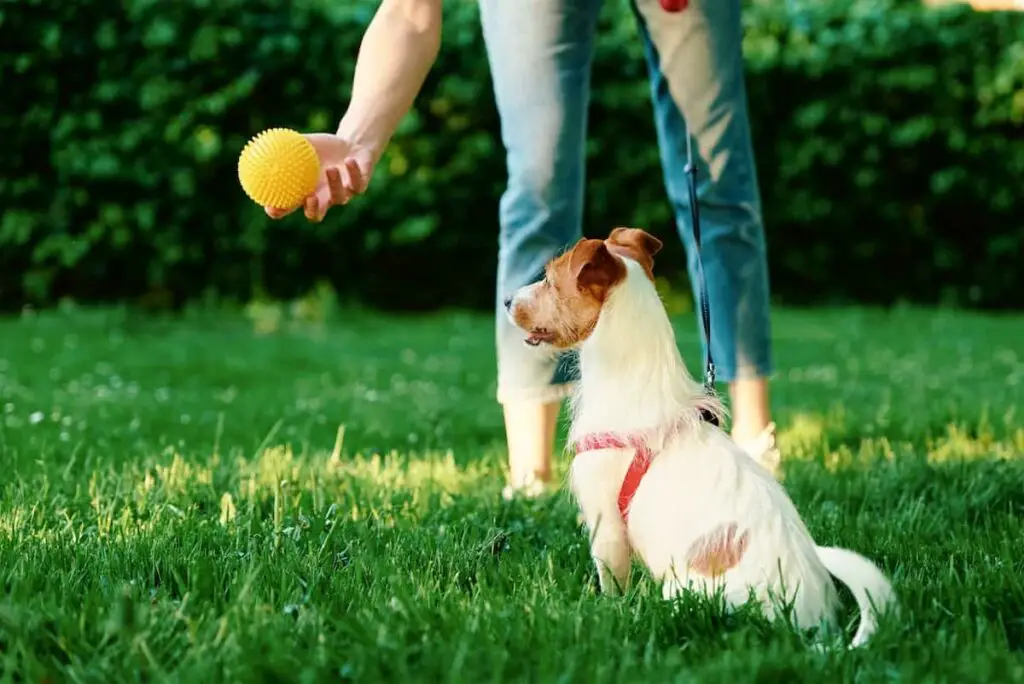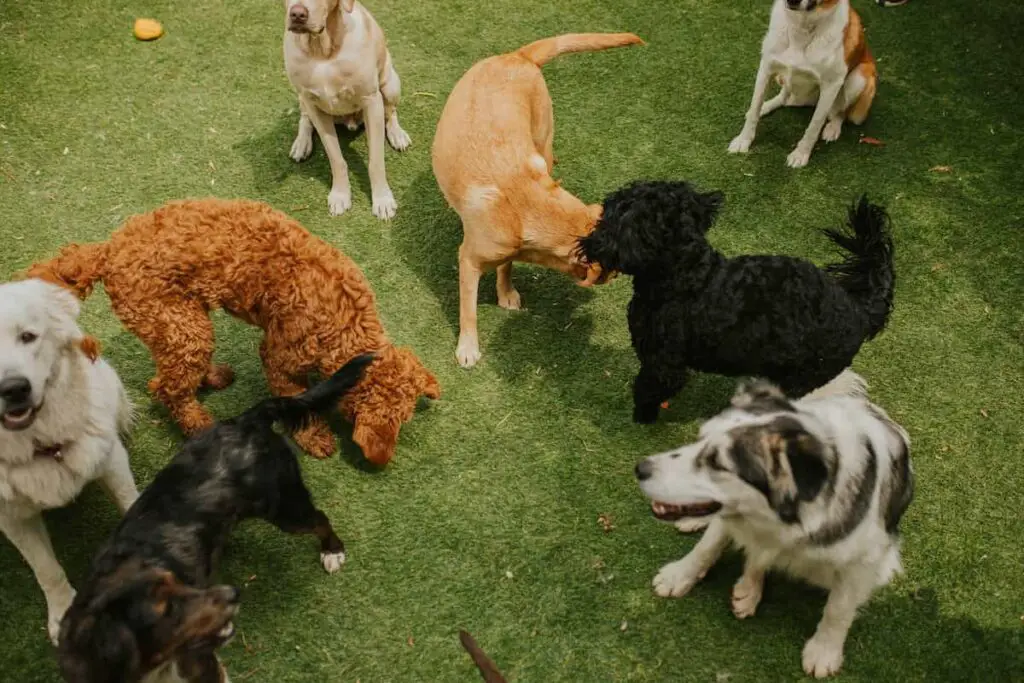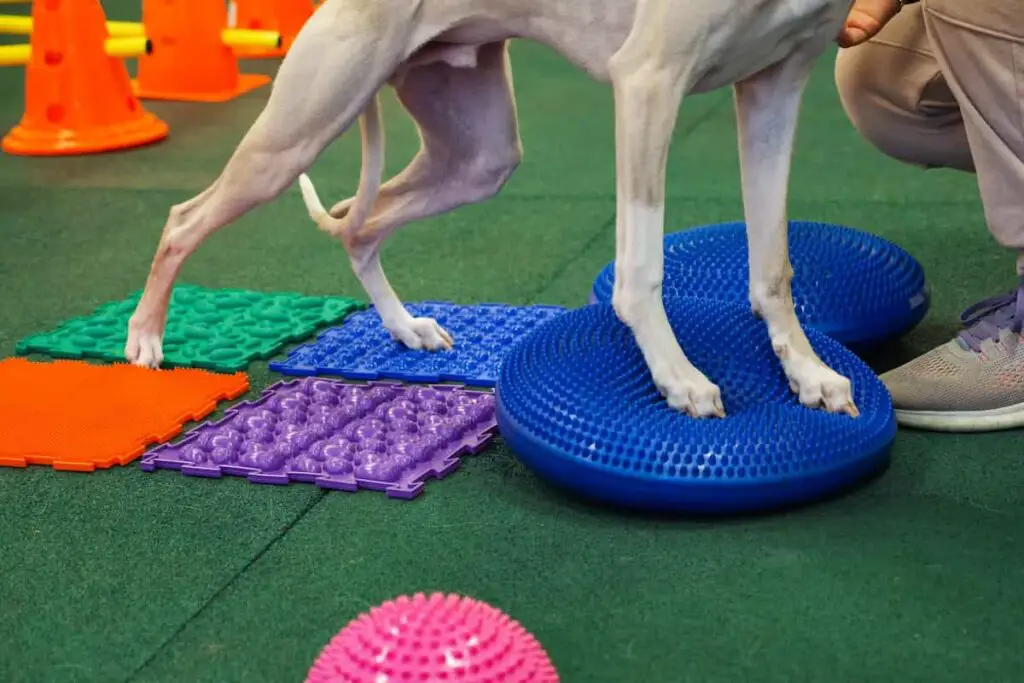We all know that exercise and good health go hand in hand. Many of us try (with varying degrees of success!) to build habits and routines around exercise in order to reap those benefits.
But have you ever thought about the health benefits of exercise for your dog? Sure, going on a walk is a chance for your pup to get some fresh air and blow off some steam -- but the effects actually run much deeper than that.
If you want your furry friend to live up to his fullest potential, then dog exercise should be an integral part of your routine. Read on to learn why!
Physical Benefits
Just like humans, dogs need regular periods of exercise in order to stay in good physical shape. Exercising can be a key way to prevent certain illnesses and health problems while also helping to alleviate existing issues.
Maintaining a Healthy Weight
Helping your dog exercise is one of the best ways to avoid issues with their weight, particularly obesity. Your dog, while living in your home, has access to a steady supply of food; so, unless he gets regular exercise, his weight gain may be steady as well!
Becoming overweight can lead to a variety of future health complications for your pup, including joint pain, respiratory issues, and heart failure. Going on regular walks and engaging in active play can help your dog stay at a healthy weight.

Preventing Premature Aging
Like all loving pet owners, you want your dog to live the longest and healthiest life possible. However, letting your dog lounge around all day isn't going to be the best way to achieve this goal.
One of the simplest, but most important, benefits of dog exercise is that it keeps your furry friend moving. Physical activity of any sort can help to prevent premature aging by exercising your dog's muscles and joints and building up their endurance and strength. The work you two put into staying active now will benefit him for years to come.
Promoting Strong Muscles and Bones
By fortifying the muscles and bones, dog exercise also builds a strong defense against future health issues which may crop up in these areas later in life. Regular exercise can help prevent problems with muscle loss and osteoporosis later on -- saving your pup a lot of pain, and you a lot of money on vet bills.
Improving Internal Health and Metabolism
In addition to its various musculoskeletal benefits, dog exercise can improve other aspects of internal health as well. Healthy activity levels can help keep your dog's cardiovascular and respiratory systems in top shape. Exercise can also promote better digestion and improve insulin health, both of which can help your furry friend to feel his best.
Mental Benefits
Dog exercise isn't just important for your pet's physical health -- it's vital for his mental wellness, too. A healthy pup is a happy pup!
Giving Your Dog a "Job"
If you've ever watched a competitive dog show before, you know that the adorable contestants are sorted into certain groups: herding, sporting, and so on. Dogs are companion animals, and many were originally bred to assist with specific activities like those represented in these categories.

Your dog still has these basic instincts for helping. Thus, it's important to ensure your pet feels like he has a purpose in his life with you. Dog exercise can help with this, as your pup will enjoy having special "tasks" to do for you, like fetching a ball or finding an item in hide-and-seek.
Combatting Anxiety and Behavioral Problems
Your dog's instinctive desire to assist you also means that he enjoys having routines -- after all, he can "help" you better if he can predict when you'll need him. In addition, dogs are naturally active creatures. Because of these factors, it shouldn't be a surprise that not getting exercise on a regular basis can contribute to your pet experiencing anxiety and acting out.
Having a proper amount of dog exercise in your schedule can help to combat these issues. Physical activity can help your dog let off steam and work out nervous energy, leaving him calmer and more content. Exercising on a routine basis can also help create a rhythm in your dog's daily life, giving him a greater sense of stability.
Getting enough exercise can help your dog to behave better at home, too. If you give your pet a dedicated time of freedom and play, he's less likely to seek out ways of "entertaining" himself that you might not enjoy (chewed slippers, anyone?). Remember, a tuckered-out and content dog is less likely to tear the house apart!
Social Benefits
In addition to the great physical and mental benefits of physical activity, dog exercise can also help your pet to become more socially and emotionally well-rounded.
Providing Opportunities for Socialization
Dogs can often be territorial and protective creatures; it's in their nature, but it's not always desirable in a pet. After all, it's never fun when your dog gets overly agitated by visitors to your house or too aggressive with other pups at the park.
One of the best ways to encourage more friendly and sociable behavior is through exposure; you need to help your pet spend more time around other dogs and other people. Helping your dog exercise by going on walks and playing at the park gives him more opportunities to be around others, gradually teaching him how to be more comfortable and calm in social situations.

Strengthening You and Your Dog's Bond
Devoting time to dog exercise also means that you'll be getting quality one-on-one time with your favorite pooch. Naturally, this will bring the two of you emotionally closer together. Especially if you're someone who often spends a significant amount of time away from your dog due to your work schedule or other factors, this can be a great way to forge a special bond with him.
Promoting Obedience
By enjoying the time spent exercising with you, your dog will also learn to trust you more. After all, you're the wonderful human who takes him on fun walks and plays fetch with his favorite ball! Because of this positive association, he will gradually become more inclined to listen to you and obey your commands. This can make training easier and more efficient in the long run.
Benefits for Older Dogs and Dogs with Disabilities
It's clear that dog exercise comes with a myriad of benefits for your pup. However, keep in mind that regular physical activity isn't just for the young and fit; rather, it is important for dogs of all ages and abilities.
Easing Arthritis and Joint Pain
It might be natural to initially want to cut back on exercise if you know that your dog is dealing with some chronic pain. But contrary to what you may think at first, the right kind of movement can actually help to alleviate joint discomfort. Knowing your pet's abilities and limits can help you to create an appropriate dog exercise plan.

You'll want to avoid intense activities such as fetch and tug-of-war, as they involve quick bursts of movement and sudden stops. Keep an eye on the weather, too, as cold temperatures can aggravate joint discomfort. However, low-impact activities such as swimming and going on a leisurely walk on a nice day can be incredibly helpful for easing arthritis and other joint pain.
Building Strength and Balance
As we covered earlier, dog exercise can help to build up strength and endurance; this is especially vital for those with disabilities and other physical challenges. If a dog has experienced a health setback and needs to either relearn certain skills or learn to do them in different ways, regular physical activity will be vital in this process.
For instance, a dog recovering from orthopedic surgery can regain his sense of balance with appropriate exercise as he adjusts to his new gait. In situations where a longer rehabilitation program is needed, specialized aquatic therapy can be an incredibly beneficial experience as well. Your vet should be able to provide you with specific ideas to help your dog on his road to recovery.
Keeping Your Dog's Mind Sharp
The cognitive benefits of dog exercise can become particularly important as your furry friend gets older. In the same way that some folks do crossword puzzles to stay sharp, your pooch will continue to benefit from the mental stimulation of having special "tasks" to do.
For dogs unable to participate in high-intensity physical activities, food puzzles can be a great way to still engage them mentally. These toys provide plenty of stimulation as your dog tries to figure out how to get to the hidden treat. If this sounds like something your pup would enjoy, check out the endlessly entertaining Outward Hound Interactive Treat Puzzle.

Furthermore, regular exercise routines can help your dog feel more comfortable with the pattern of their day. This can help them maintain a sense of clarity and peace as they age.
Frequently Asked Questions
Now that we've discussed the major benefits of dog exercise, let's turn to some frequently asked questions.

Q: Is a good run around the yard enough exercise for my dog?
Letting your dog go for a good run around the yard is better than not getting any exercise, for sure -- at least it provides movement and time spent out in the fresh air.
However, good dog exercise should be more engaging than this, especially if you're hoping to achieve the mental and social benefits we went over earlier. Consider how going on a long walk together provides an opportunity to bond with your pet, and how playing games engages your dog's problem-solving skills. Your active involvement in the exercise is key for reaping all of its rewards.
Read our recommendations about the Best Exercise Equipment for ways to make exercising your dog fun.
Q: How much exercise is ideal at each life stage?
While dog exercise is important throughout your pup's lifespan, the exact amount will vary at each stage of their development.
Puppies have an incredible amount of energy and love to play -- but since they're still growing and tire easily, they're better suited to several shorter periods of exercise throughout the day rather than one longer one.
On average, adult dogs should be getting a minimum of 30 minutes of exercise per day. This amount can vary widely based on breed and temperament; doing some research to learn more about your dog's specific needs can help you determine how much time you should be aiming for.
As far as senior dogs go, the target amount of exercise should be evaluated on a case-by-case basis. Some older dogs may get tired more easily and require shorter exercise periods, while others may still have the stamina of their youth.
Q: What sort of exercise is best for my dog?
Honestly, the answer to this question will be different for each individual dog! However, there are some general considerations you can take into account when deciding how to help your dog exercise.
Dogs come in many shapes and sizes, and smaller and larger dogs have different strengths when it comes to participating in physical activity. Larger dogs can be well-suited for going on longer walks and participating in high-intensity sports activities, which would wear a smaller pup out too quickly; conversely, smaller dogs may enjoy playing games which wouldn't be enough of a workout for their larger counterparts.
Your location and community will also play a part in what sort of exercise options are available to you and your dog. A rural setting may be more conducive to activities needing more open space, such as playing frisbee or running a homemade agility course. Suburban and urban communities, on the other hand, may provide better access to dedicated dog parks.
Of course, there will always be those days when the weather just isn't great for outdoor activities. But the fun doesn't have to end just because you're stuck inside! Tossing a ball up and down the stairs, setting up a homemade obstacle course, or playing tug-of-war are all great options for getting your daily dog exercise done indoors.
Moving Towards a Healthier, Happier Future

It's hard to overstate the importance of exercise in your quest to provide the best quality of life for your pet. Helping your dog exercise is one of the most vital things you can do to ensure his health and well-being for years to come.
Are you ready to keep working towards a better lifestyle with your dog? Check out our other Dog Exercise posts and guides!
















